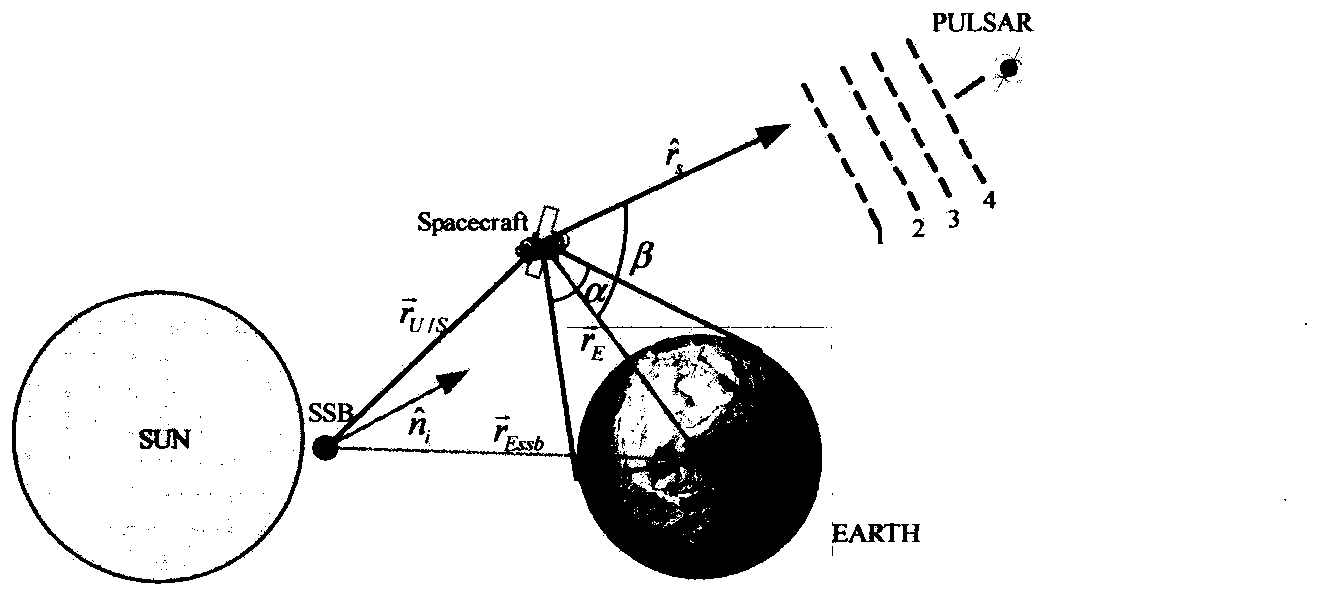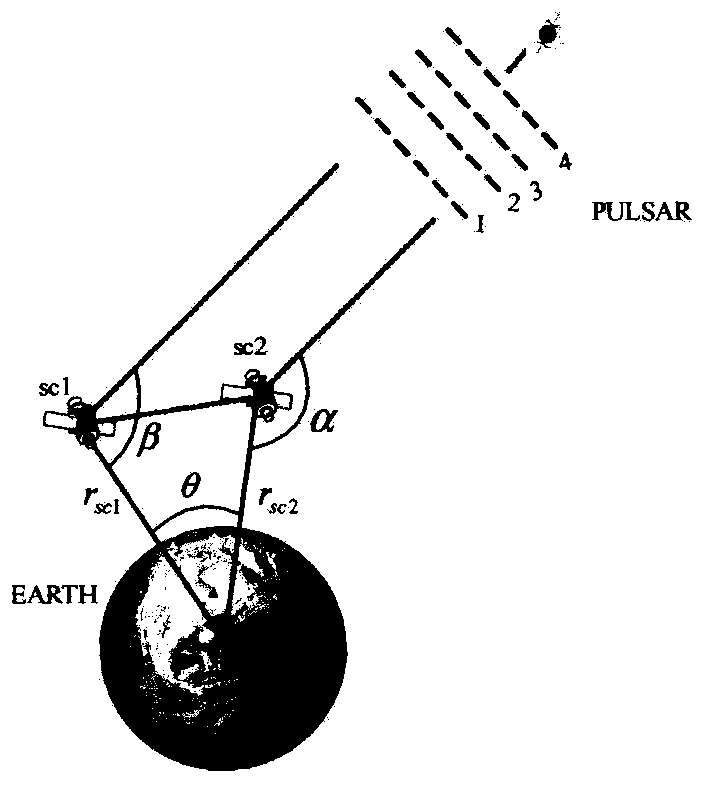Satellite autonomous navigation system and method integrating pulsar radiation vector and timing observation
An autonomous navigation and pulsar technology, applied in the field of navigation, can solve the problem of insufficient utilization of pulsar navigation capabilities and the positioning accuracy of orbiting satellites
- Summary
- Abstract
- Description
- Claims
- Application Information
AI Technical Summary
Problems solved by technology
Method used
Image
Examples
Embodiment Construction
[0047] Such as figure 1 As shown, the spacecraft autonomous navigation and positioning system of the fusion pulsar radiation direction vector and timing observation of the present invention includes X-ray detector 3, collimator 2, X-ray pulsar timing model and characteristic parameter database 7, solar system planet parameters Library 6, space-borne atomic clock 17, space-borne computer, infrared (or ultraviolet) horizon sensitivity 11, navigation algorithm library 8, and satellite autonomous control platform, etc.; radiation photon stream 1 from X-ray pulsar passes through collimator 2 for selection Through processing, when the direction of the collimator 2 is consistent with the radiation photon flow direction vector from the X-ray pulsar or in the range of the gate angle, the X-ray photon flow 1 reaches the X-ray time-varying detector 3, otherwise the X-ray pulse The star radiation photon flow cannot reach the X-ray time-varying detector 3 through the collimator; the X-ray ...
PUM
 Login to View More
Login to View More Abstract
Description
Claims
Application Information
 Login to View More
Login to View More - R&D
- Intellectual Property
- Life Sciences
- Materials
- Tech Scout
- Unparalleled Data Quality
- Higher Quality Content
- 60% Fewer Hallucinations
Browse by: Latest US Patents, China's latest patents, Technical Efficacy Thesaurus, Application Domain, Technology Topic, Popular Technical Reports.
© 2025 PatSnap. All rights reserved.Legal|Privacy policy|Modern Slavery Act Transparency Statement|Sitemap|About US| Contact US: help@patsnap.com



